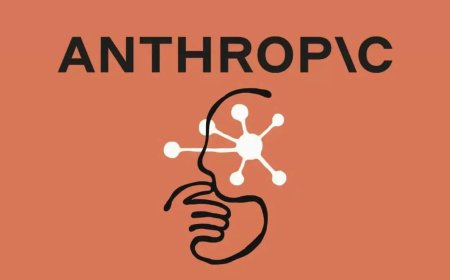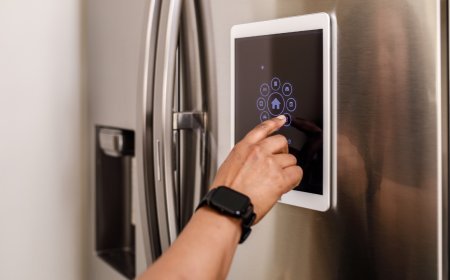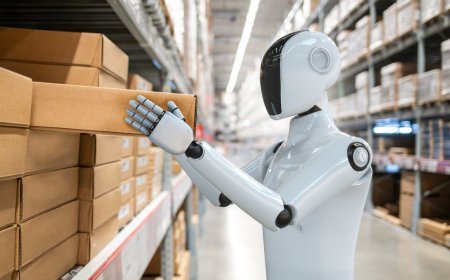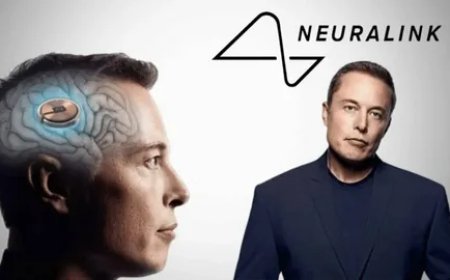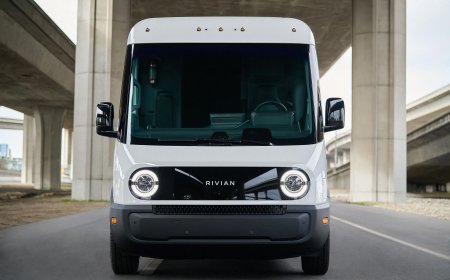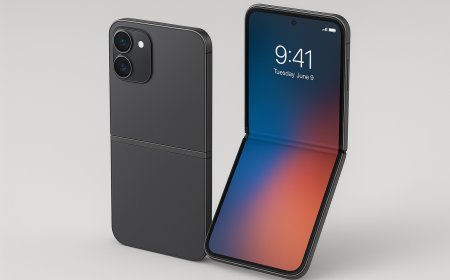Neuralink’s Brain Chip Breakthrough: Are We Ready for the First Real Cyborgs?
The line between humans and machines is becoming increasingly blurred. Neuralink, Elon Musk’s ambitious brain–computer interface (BCI) company, recently achieved a milestone by implanting its brain chip into a human for the first time. This step, while controversial and filled with ethical, medical, and social questions, could change the way we think about intelligence, disability, and even what it means to be human. But with great technological leaps come equally great responsibilities. Are we truly ready for the dawn of cyborgs? This article explores Neuralink’s purpose, process, breakthroughs, risks, ethical dilemmas, and the future it envisions for humanity.
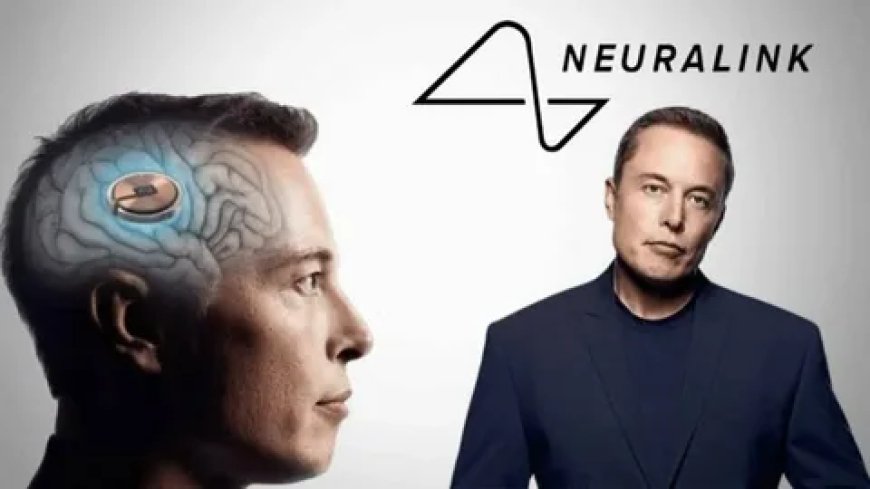
The Vision Behind Neuralink
Founded in 2016, Neuralink’s mission has always been audacious: to create a direct communication link between the human brain and machines. Unlike traditional technology that relies on external input devices like keyboards, touchscreens, or even voice commands, Neuralink’s chip aims to bypass these intermediaries and connect directly to the neurons firing inside the brain.
Elon Musk has framed Neuralink as both a medical tool and a step toward transhumanism. On the medical front, the company seeks to restore mobility to paralyzed individuals, treat conditions like epilepsy, depression, and blindness, and help people suffering from neurodegenerative diseases. On the futuristic side, Musk often speaks about enhancing human cognition, merging human minds with artificial intelligence, and preventing AI from outpacing humanity.
How the Neuralink Brain Chip Works
At its core, Neuralink’s brain chip is a neural implant with ultra-thin, flexible electrode threads that connect to neurons. These threads pick up electrical signals and translate them into digital data. The implant is inserted by a robot designed to perform delicate neurosurgery with precision, avoiding blood vessels and reducing trauma.
The device connects wirelessly to external systems, allowing thought-driven communication with computers, prosthetics, or even other people’s devices. Imagine typing an email, moving a cursor, or controlling a robotic limb—just by thinking.
The First Human Implant
In January 2024, Neuralink announced the successful implantation of its device into a human subject. This marked the transition from years of animal trials—mice, pigs, and monkeys—into human experimentation. Early reports suggested that the volunteer demonstrated some ability to control a cursor with their thoughts.
While groundbreaking, this development raises critical concerns. Are the long-term effects known? What happens if the chip malfunctions or is hacked? And perhaps most pressing: are patients fully informed about the risks of being pioneers in uncharted neurological territory?
The Purpose: Medicine Meets Enhancement
Neuralink’s first applications will focus on medical necessity. The potential benefits for patients with severe disabilities are enormous:
-
Paralysis: Restoring communication and mobility through brain-controlled prosthetics.
-
Blindness: Direct stimulation of the visual cortex to recreate sight.
-
Neurodegenerative diseases: Slowing progression or restoring lost functions in conditions like ALS or Parkinson’s disease.
-
Mental health: Offering new solutions for depression, anxiety, or PTSD when traditional therapies fail.
But Musk’s vision goes further. Neuralink could enhance human intelligence, memory, and communication. Imagine learning new languages instantly, downloading complex skills, or even having “telepathic” conversations. At this point, the line between treatment and enhancement begins to blur, pushing humanity closer to the concept of real-life cyborgs.
Ethical and Moral Dilemmas
With every leap in biotechnology comes an avalanche of ethical debates. Neuralink’s chip poses questions such as:
-
Informed Consent: Can early test subjects fully understand the unknown risks of such radical procedures?
-
Equity and Access: Will this technology be limited to the wealthy, deepening societal inequalities?
-
Privacy Concerns: If thoughts can be read or influenced, who controls the data? Could governments or corporations exploit it?
-
Identity and Humanity: If we alter cognition and merge with AI, do we risk losing what makes us fundamentally human?
-
Animal Rights: Neuralink’s earlier animal testing faced criticism for alleged inhumane treatment of monkeys and pigs.
These questions are not science fiction—they are immediate realities as human implantation begins.
The Cyborg Question: Are We Ready?
The idea of humans as cyborgs isn’t entirely new. Pacemakers, cochlear implants, and prosthetic limbs already integrate technology into our bodies. Neuralink, however, is unique because it interfaces directly with the seat of consciousness—the brain.
This leap changes the equation. If thoughts, emotions, and decisions can be influenced by a chip, are we still fully in control of ourselves? Or does this blur the boundaries between biological identity and technological augmentation?
While the promise is extraordinary—curing disease, augmenting memory, extending lifespans—the risks are equally monumental. Psychological impacts, social acceptance, and potential misuse all demand careful regulation.
Technical Challenges
Despite the hype, Neuralink faces steep technical hurdles before becoming mainstream:
-
Longevity of the implant: The brain’s environment is hostile to foreign objects; implants must endure for years without failure.
-
Signal accuracy: Reading and interpreting complex neural patterns is far from perfect.
-
Scalability: Moving from a few test subjects to millions of patients requires massive resources and infrastructure.
-
Safety: Risks of infection, brain injury, or device malfunction must be minimized.
While progress is impressive, it’s far too early to predict when Neuralink will be broadly available.
Legal and Regulatory Barriers
Medical devices must pass rigorous safety standards before public release. Neuralink will need approval from the U.S. Food and Drug Administration (FDA) and equivalent agencies worldwide. Questions remain about liability: if the chip malfunctions and harms a patient, who is responsible—the surgeon, Neuralink, or regulators who approved it?
Additionally, governments may impose restrictions to prevent misuse. For instance, brain implants could theoretically be weaponized for interrogation, surveillance, or behavioral control. Without strong legal frameworks, the potential for abuse looms large.
Global Competition
Neuralink is not alone in the race to connect minds with machines. Competitors such as Synchron, Paradromics, and Kernel are pursuing similar brain–computer interfaces. Some focus on less invasive approaches, such as stent-like implants in blood vessels near the brain.
China and Europe also invest heavily in neurotechnology, seeing it as the next frontier in healthcare and military applications. This global race raises another question: should BCI development be a cooperative humanitarian project, or will it fuel geopolitical rivalries?
Social Impacts: Dividing or Uniting Humanity?
If successful, Neuralink could reshape society in profound ways:
-
Disability Inclusion: Empowering individuals who were once marginalized due to physical limitations.
-
Economic Shifts: A workforce enhanced by brain–machine interfaces could transform industries.
-
Inequality: Access restricted to the wealthy may create a cognitive elite versus an unenhanced majority.
-
Culture and Identity: Will natural human abilities be devalued in a world where “enhanced” individuals dominate?
Society must decide how to integrate such transformative technology without leaving millions behind.
Elon Musk’s Larger Vision
For Musk, Neuralink is not just a medical company—it’s part of his broader mission to prepare humanity for a future dominated by artificial intelligence. He has repeatedly warned that AI could surpass human intelligence and become uncontrollable. Neuralink, he argues, is a way to level the playing field by merging with AI rather than competing against it.
This futuristic outlook may sound like science fiction, but with every successful experiment, it edges closer to reality.
Are We Ready?
The answer depends on perspective. For patients suffering from paralysis, blindness, or incurable diseases, Neuralink offers hope and immediate benefits. For society as a whole, however, the leap to brain–computer integration demands caution, regulation, and global dialogue.
Becoming a cyborg is not simply about adopting new technology—it’s about redefining what it means to be human. The world may not yet be ready, but the future is knocking at the door.
Conclusion
Neuralink’s brain chip breakthrough is both a triumph of innovation and a test of our humanity. It promises life-changing solutions for patients, unprecedented cognitive enhancements, and a new frontier for science. But it also carries immense risks—medical, ethical, and societal.
The first real cyborgs may already be among us. Whether humanity thrives or falters in this new era will depend not just on technological brilliance, but on our wisdom, ethics, and readiness to embrace change responsibly.
What's Your Reaction?
 Like
0
Like
0
 Dislike
0
Dislike
0
 Love
0
Love
0
 Funny
0
Funny
0
 Angry
0
Angry
0
 Sad
0
Sad
0
 Wow
0
Wow
0




